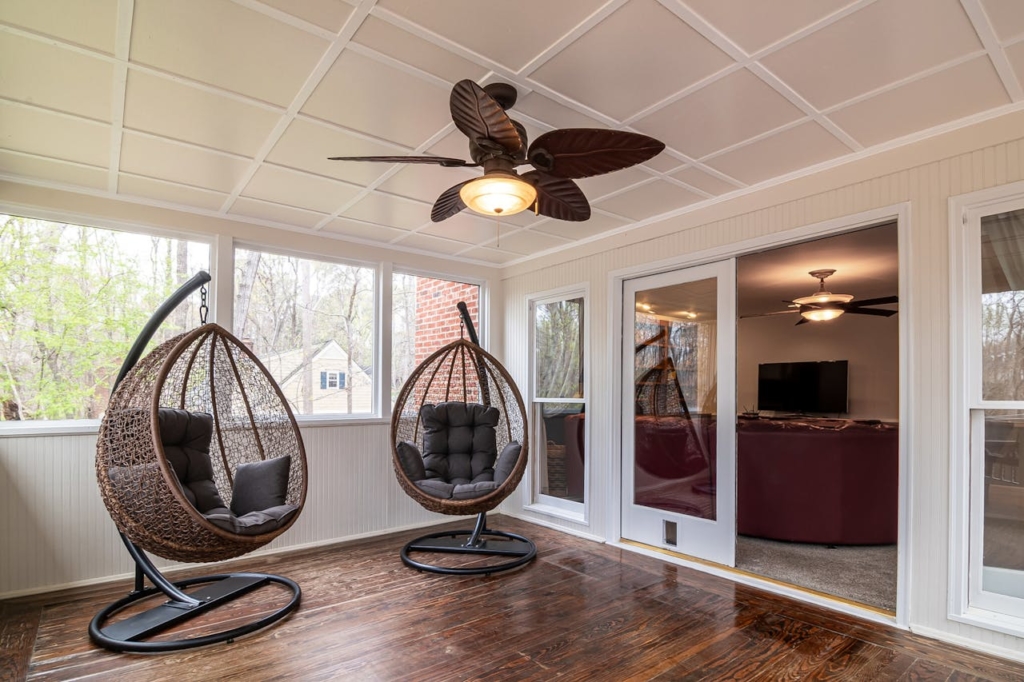Energy efficiency should be your top consideration when choosing a cooling device, especially for those aiming to reduce electricity bills or minimize their environmental impact. While air conditioners are common for cooling large spaces, small fans provide an energy-efficient alternative for individuals seeking localized cooling without high energy consumption. Understanding how small fans compare in energy efficiency can help homeowners and office workers make informed decisions about their cooling solutions. This article explores the energy efficiency of small fans, highlighting how they work, their benefits, and why they stand out compared to other cooling options.

How Small Fans Work and Why They Use Less Energy
Small fans operate by merely circulating air around and thus increasing the wind to evaporate moisture from your skin which gives a cooler sensation. For example, unlike air conditioners that remove heat and moisture from the air to lower ambiance temperature, small fans cool only by blowing air.
Small fans are much more energy-efficient than other cooling devices because of their straightforward mechanism. When you turn on a fan, electricity is passed to a motor that spins the blades, which pushes air. This consumes far less power than the compressors, refrigerants, and large motors needed by air conditioning units to adequately bring temperatures down. The power consumption of small fans (in watts) is much less than air conditioners or other larger fans, consequently offering cheaper options to run the fan.
Comparing Energy Usage: Small Fans vs. Air Conditioners
Fans use a fraction of the energy that air conditioners do, so small fans are a great way to cut down on your energy usage. Typically a small fan, depending on size and design will use between 10 to 50 watts of power. A standard air conditioner, however, uses between 50 and 500 watts of power to run. This massive power draw difference illustrates how effective small fans can be when deployed in scenarios where full-room cooling is not necessary.
For example, when someone is working in a home office or just to chill part of the house without having to turn on air conditioning, you can place a small fan in the space. With little fans, you can experience cost savings over the long term.
Impact of Modern Fan Technology on Energy Efficiency
Fan technology advancements over the years have led to better energy-efficient small fans. Most of the modern small fans come with significant advantages like in-build energy-saving motors and systems for smart speed control. For example, the use of brushless DC motors (BLDC) in small fans has become more and more widespread thanks to their lower power consumption and longer life. With these motors the fan operates at a lower wattage without losing as much power, ultimately introducing more efficiency to the fan.
Smart controls or timers on a few small fans also permit users to tweak airflow settings and automatically turn off the fan after use. Advancements in blade designs for fans enable improved airflow efficiency meaning air can circulate more effectively while using less energy.
Environmental Benefits of Using Small Fans
Besides reducing electricity bills, small fans offer environmental benefits by consuming less power and reducing carbon emissions. Since small fans use far less energy than air conditioners or larger cooling systems, their lower electricity consumption results in a reduced demand for power generation, which lowers greenhouse gas emissions from power plants.
Choosing small fans over air conditioners can make a significant difference, particularly during peak summer months when energy consumption skyrockets because of the widespread use of cooling devices. By opting for a small fan in situations where an air conditioner isn’t necessary, individuals can contribute to energy conservation and help reduce their overall environmental footprint.
Small fans last longer and have fewer maintenance requirements compared to air conditioners, which often need regular servicing, refrigerant refills, and cleaning. This durability and ease of use contribute to a more sustainable lifestyle by reducing the need for frequent replacements and repairs.
Small fans stand out in terms of energy efficiency when compared to larger, more power-intensive cooling devices like air conditioners. They provide targeted cooling that uses minimal electricity, making them an ideal choice for personal or localized cooling needs. With the development of energy-efficient motors and smart control features, small fans have become even more economical and environmentally friendly, offering substantial energy savings and reducing the strain on electricity grids during hot months. Whether for homes, offices, or dorms, small fans provide an effective and sustainable way to stay cool while keeping energy consumption and environmental impact to a minimum.










